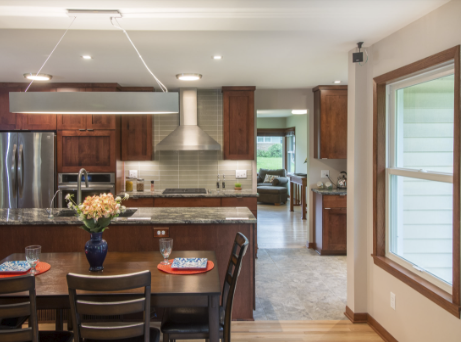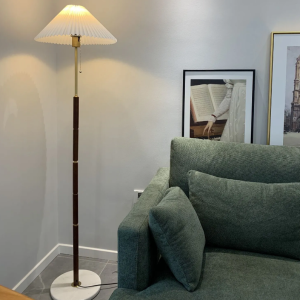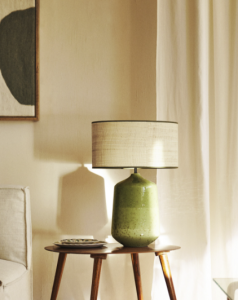Recessed lighting has become a popular choice for kitchen illumination, and for good reason. One of the primary benefits is its ability to provide a clean, modern aesthetic that complements various kitchen designs. Unlike traditional light fixtures that can hang down and obstruct sightlines, recessed lights are installed into the ceiling, creating a streamlined look that enhances the overall ambiance of the space.
This unobtrusive design allows for a more open feel, making the kitchen appear larger and more inviting. Additionally, recessed lighting can be strategically placed to highlight specific areas, such as countertops or islands, ensuring that every corner of the kitchen is well-lit and functional. Another significant advantage of recessed lighting is its versatility.
These fixtures can be used in various configurations to achieve different lighting effects. For instance, they can be installed in a grid pattern for general illumination or focused on specific areas for task lighting. This adaptability makes recessed lighting an excellent choice for kitchens, where different activities require varying levels of brightness.
Furthermore, with advancements in LED technology, recessed lights are now more energy-efficient than ever, providing bright illumination while consuming less power. This not only reduces energy bills but also contributes to a more sustainable home environment.
Choosing the Right Placement for Recessed Lighting
Targeting Key Work Areas
One common approach is to install recessed lights Lamolighting above key work areas, such as countertops, sinks, and cooking surfaces. This ensures that these spaces are adequately illuminated for food preparation and cooking tasks. For instance, placing lights directly above an island can create a focal point while providing ample light for meal prep or casual dining.
Balancing Task and Ambient Lighting
In addition to task areas, it’s essential to consider ambient lighting when planning the placement of recessed fixtures. A combination of both task and ambient lighting creates a balanced atmosphere in the kitchen. To achieve this, homeowners often opt for a staggered arrangement of recessed lights throughout the ceiling. This not only helps to eliminate shadows but also creates a warm and inviting environment.
Ensuring Even Distribution of Light
It’s advisable to maintain a distance of about 4 to 6 feet between each light fixture to ensure even distribution of light across the space. Moreover, taking into account the height of the ceiling is vital; higher ceilings may require more fixtures or deeper recessed cans to achieve the desired brightness.
Types of Recessed Lighting Fixtures for the Kitchen
When it comes to selecting recessed lighting fixtures for the kitchen, there are several types to consider, each offering unique features and benefits. One popular option is the baffle trim, which features a ribbed interior that helps to reduce glare while providing a soft, diffused light. This type of trim is ideal for general lighting in kitchens where comfort and ambiance are priorities.
Another option is the reflector trim, which has a shiny surface that directs light downward, making it suitable for task lighting over work areas. For those looking to add a touch of style to their kitchen, adjustable or gimbal recessed lights are an excellent choice. These fixtures can be tilted or rotated to direct light exactly where it’s needed, making them perfect for highlighting artwork or architectural features within the kitchen.
Additionally, there are also wet-rated recessed lights designed specifically for areas exposed to moisture, such as above sinks or in kitchens with open layouts that connect to dining areas. Choosing the right type of fixture not only enhances functionality but also contributes to the overall design aesthetic of the kitchen.
How to Calculate the Number of Recessed Lights Needed
Determining the number of recessed lights required in a kitchen involves several factors, including the size of the space, ceiling height, and desired brightness level. A common guideline is to use a formula based on lumens per square foot. For general kitchen lighting, it’s recommended to aim for approximately 50 lumens per square foot.
To calculate this, first measure the area of your kitchen in square feet and then multiply that number by 50 to find the total lumens needed. Once you have established the total lumens required, you can select your light fixtures based on their lumen output. For example, if you choose LED recessed lights that emit 800 lumens each, you would divide your total lumens by 800 to determine how many fixtures you need.
It’s also important to consider layering your lighting; combining recessed lights with other sources like pendant lights or under-cabinet lighting can create a more dynamic and functional environment. Additionally, adjusting the number of fixtures based on personal preference and specific kitchen tasks can further refine your lighting plan.
Tips for Installing Recessed Lighting in the Kitchen
Installing recessed lighting in the kitchen requires careful planning and execution to ensure optimal results. One essential tip is to create a detailed layout before beginning installation. Sketching out where each fixture will be placed can help visualize how the lights will interact with existing elements in the kitchen.
It’s also wise to mark these locations on the ceiling with painter’s tape or chalk to get a better sense of spacing and alignment before making any cuts. Another critical aspect of installation is ensuring proper electrical connections and safety measures are followed. If you’re not experienced with electrical work, hiring a licensed electrician is highly recommended to avoid potential hazards.
Additionally, using IC-rated (Insulation Contact) fixtures is crucial if your recessed lights will be installed in areas where they come into contact with insulation material. This rating ensures that the fixtures can safely operate without overheating. Finally, consider using dimmer switches for your recessed lights; this allows you to adjust brightness levels according to different activities and moods in the kitchen.
How to Control and Dim Recessed Lighting in the Kitchen
Controlling and dimming recessed lighting in the kitchen adds an extra layer of versatility and comfort to your space. One popular method is through smart home technology, which allows homeowners to control their lighting via smartphone apps or voice commands through devices like Amazon Alexa or Google Assistant. Smart dimmers can be installed in place of traditional switches, enabling users to adjust brightness levels seamlessly from anywhere in their home.
For those who prefer a more traditional approach, installing standard dimmer switches is an effective way to manage light intensity. These switches come in various styles and can be easily integrated into existing electrical systems without requiring extensive modifications. When selecting dimmer switches, it’s essential to ensure they are compatible with your chosen light fixtures—especially if you’re using LED bulbs—as not all dimmers work well with LED technology.
By incorporating dimming capabilities into your recessed lighting setup, you can create an inviting atmosphere suitable for everything from family dinners to late-night snacks.
Maintenance and Cleaning of Recessed Lighting Fixtures
Maintaining and cleaning recessed lighting fixtures is essential for ensuring their longevity and optimal performance. Over time, dust and grime can accumulate on both the fixtures themselves and within the housing, leading to reduced brightness and efficiency. Regularly inspecting your recessed lights is advisable; this includes checking for any signs of wear or damage as well as ensuring that all connections remain secure.
Cleaning recessed lights typically involves gently wiping down the exterior with a soft cloth or microfiber towel to remove dust and fingerprints. For deeper cleaning, it may be necessary to remove the trim or lens cover—if applicable—before cleaning inside the housing with a vacuum attachment or damp cloth. It’s important to turn off power at the circuit breaker before performing any maintenance tasks to ensure safety.
Additionally, replacing bulbs as needed will help maintain consistent brightness levels throughout your kitchen.
Enhancing Your Kitchen Design with Recessed Lighting
Recessed lighting offers an opportunity not only for functional illumination but also for enhancing overall kitchen design. By strategically placing fixtures in alignment with architectural features or design elements—such as cabinetry or backsplashes—you can create visual interest and depth within the space. For example, installing recessed lights above open shelving can highlight decorative items while providing practical task lighting.
Moreover, color temperature plays a significant role in how recessed lighting affects kitchen design. Warmer tones (around 2700K) create a cozy atmosphere ideal for family gatherings, while cooler tones (around 4000K) lend themselves well to modern aesthetics and detailed tasks like cooking or baking. Mixing different types of lighting—such as combining recessed lights with pendant fixtures—can further enhance design elements while ensuring that functionality remains at the forefront.
Ultimately, thoughtful integration of recessed lighting into your kitchen design can transform it into a beautifully illuminated space that meets both practical needs and aesthetic desires.



